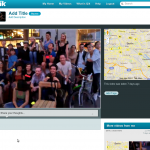Funny how things work sometimes. I neglect this blog for a couple of years and of course it gets hacked, as outdated WordPress does. Luckily I discovered the defacement within hours, moved the site over to a new server and did some quick maintenance. While updating, re-uploading stuff and poking around old posts I get inspired to write this new post. The proverbial creation within destruction is doing overtime here. It’s almost midnight.
I’ve been busy building SatoshiPay, starting around the end of 2014. It’s a fun ride and we are only getting started. Growing the idea into a company kept me pretty occupied and not updating my beloved blog (est. 1999) was the smallest thing I neglected. Part of creating our nanopayments empire was releasing a pretty sweet WordPress plugin. It allows easy monetisation of content and I might do some more dogfooding here in the future.

OK, back to the “hack”. Somehow the “attackers” gained access to files that are writeable by the web server and replaced one single file: index.php. Obviously, I blame the Russians! Possibly with the help of some North Koreans. The previous server being an old PHP box, I didn’t even bother looking into the root cause of the breach, but abandoned it faster than you can say “who is still using PHP”. Turns out half of the world is, so I will keep this site running on WordPress for now, but on a fully managed web hosting instead.
I had to throw away the nice white and green design theme I created 10 years ago, because it was outdated beyond repair. Big surprise there. I went for the 2017 standard WordPress theme and will most likely not modify it in the near future ever. I uploaded a few travel photos of mine, and if you hit reload on the start page they will randomly appear. Enjoy! 🙂
Oh, for people that don’t follow my Twitter: I actually did some SatoshiPay related blogging on my Medium recently. But unfortunately Medium doesn’t have a plugin or extension strategy SatoshiPay could exploit. So there, good old open source workhorse WordPress it is. Clip clop and neigh! 🐎
Aaaaand, post! 💥








